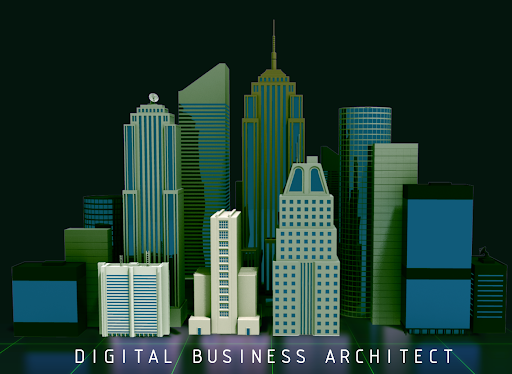Smart cities – G83G2
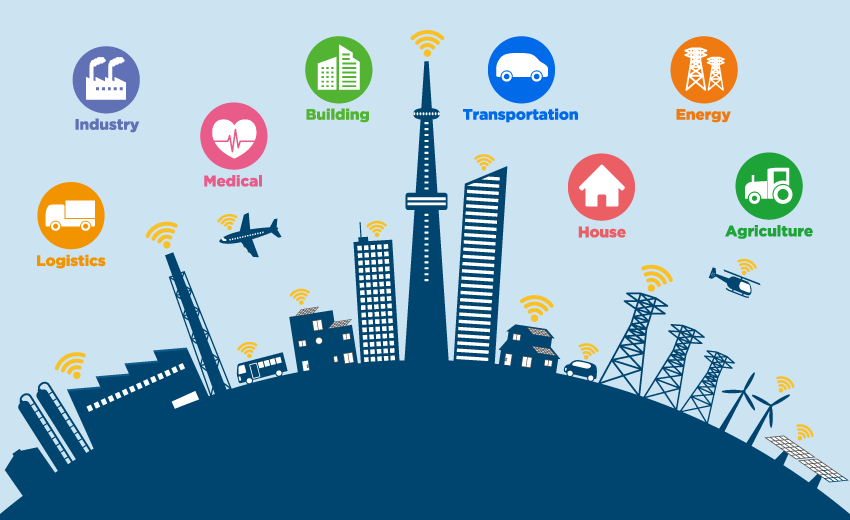
INTRODUCTION
Living in the 21st century, it is very likely for someone to have heard of the concept of “smart cities” at least once. However, it is not a simple nor basic concept, which is why it might be best understood by first looking at some of the main dilemmas arising nowadays regarding:
- Environmental challenges: climate change and the resulting scarcity of environmental resources.
- Economic competition between cities to attract investment: cities compete to provide the highest possible quality of life and services in order to enhance liveability and captivate new citizens as well as businesses.
- Urbanization across new areas and around cities.
- Technological transformation and the subsequent cost reduction: a factor that not only improves the framework in which businesses operate, but also opens new possibilities for cities to develop new approaches to their services and overall dynamic.
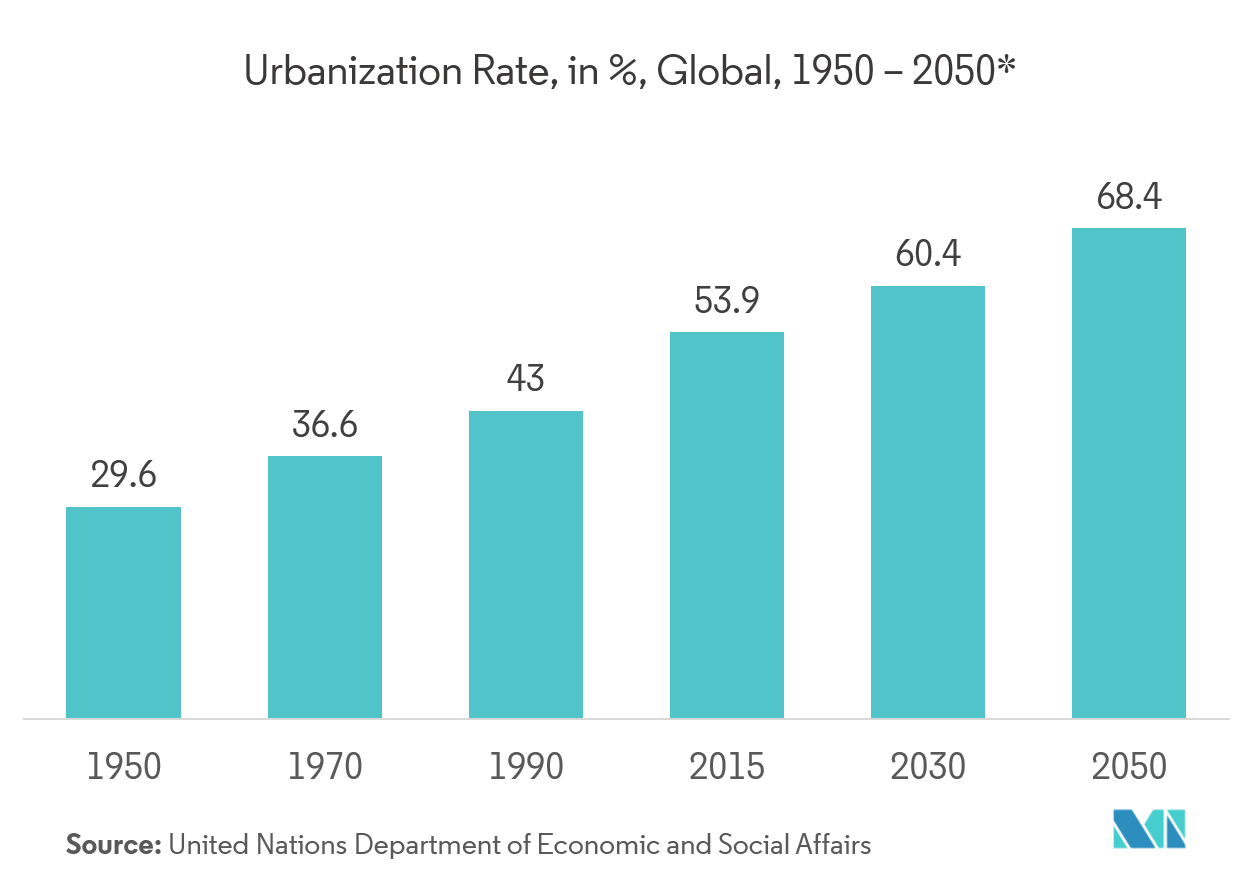
All of these factors are in a constant increasing trend, just like population numbers. As a consequence, solutions are required; carefully planned solutions -not quick fixes- that involve optimizing resources to successfully tackle these ‘wicked’ issues; and this is where smart cities come in.
Smart cities use digital technologies to enhance their liveability (quality of life), workability and sustainability. In other words, they leverage technology to serve people.
How do they do this? Smart cities’ gears are best explained through five core functions:
- Collecting data: everything related to a city’s services and dynamics; from traffic data to waste collection data.
- Processing it: processes involved in organizing data and making it more usable.
- Communicating it: making the information at hand more visual and suitable for decision making.
- Analysing it: detecting patterns that may prove leaks of resources as well as potential points of improvement.
- Making data-driven decisions: action plans and comprehensive solutions based on the knowledge attained.
This process is enabled through to a very important concept in terms of smart cities’ operation: the “ubiquitous city”. This refers to a city that connects all information systems together, from residential to governmental. That way, social systems are integrated with information systems, so every device and service is linked to an information network designed to optimize resources.

As a result, city managers and planners can manage a wide range of aspects such as energy consumption and traffic. Thus, this figure -the urban planner’s role– is a key element for the development of smart cities. This person/committee is responsible for:
- Accurately defining the issues at hand.
- Understanding the relationships between the different actors and stakeholders involved.
- Avoiding siloed approaches in favour of more comprehensive solutions that target different needs.
- Engaging citizens -which shall be understood as the users of these cities- in the decision making process.
- Helping create a better vision for the future.
After having seen the main drivers and elements of a smart city, the question is: who is making smart cities happen? The main figures are:
- Private companies such as Intel, Cisco and IBM.
- Local governments.
- Citizens (which, as previously mentioned, provide input and critical engagement).
At the end of the day, smart cities are about connectivity and integration. They require systems thinking from the urban planners and, at their core, connected streets interact. These streets are interconnected with a full suite of applications, including: real-time parking spot sensors; movement sensors in streetlights to switch on and off when required; real-time availability of charging stations for electric vehicles; sensors tracking refuse containers’ capacity for waste collection purposes; sensors providing updates on air pollution, noise and river level to prevent floods; real-time water and electricity consumption figures to save resources; and smart traffic lights that can adjust to regulate traffic flows and prevent traffic jams.
These are just some examples of how connected streets and, as a whole, smart cities, can achieve resource optimization and enhance liability. It becomes clearer now how crucial they can be for some of the main issues faced today.
Security and smart transformation
Cities are evolving from connected cities to smart cities and this needs to be taken into account when describing the security and smart systems. I want to focus especially on the cyber security aspect because it is the most recent theme in which cities can be more attacked.
There are some layers of security in a city:
Human level is the weakest layer in which information and data are stored of just one person and attacks or incidents occur but not many data of different people is compromised. It could be accessed by human threats including criminals, by negligent users or even by accident.
Business layer is a next step into seriousness because businesses have processes, activities and data relying on the online space. It is very important for businesses to have a reliable process to give their clients trust and do not lose reputation. If a business is compromised possible attackers can get to payment information, addresses… That will get us into the next layer, Information.
Information layer is where the information is stored, processed and transmitted. Among this information are Payment information, consumption data, travel data, address information… If this layer is violated it could be catastrophic.
We will analyse some of the most important threats divided into intentional and unintentional attacks that Smart Cities are facing and later on we will provide some good practises to reduce to the minimum any danger.
Unintentional threats
- Obsolescence is one of the main factors to causing vulnerabilities in technology because doing updates of software with not enough solid ground can end in security breaches.
- Operator malfunction errors made by the employees and can be made in maintenance or when installing the software.
- Software errors are the ones made by wrong written code in the operating system, these errors could affect the entire functioning of the system they are supporting.
- Acts of nature/ environmental incidents are incidents that cannot be controlled like earthquakes, floods… but they can be prevented.

Intentional threats
- Thefts are the appropriation of material used for the functioning of the networks.
- Unauthorized access this include all kinds of not permitted access to a network, leaks of private information… that affect integrity, confidentiality and reputation.
All these threats will become in a loss of reputation, the good news is that there are some good practises to prevent the failure of the systems.
Using private virtual networks and intrusion detection systems that is why now there aren’t any public wifi networks and at least you have to register with an email address.
Encryption of data in case there is a data leak the information is not compromised.
Physical protection that prevents exposing the physical components of hardware.
Regular inspection of the materials.
SMART TRANSPORTATION
Now we are going to get into deeper detail about smart transportation, a key aspect of smart cities.
Smart transportation and smart city traffic management are revolutionizing how cities approach transportation in all the aspects, time, efficiency, effectiveness, security, pollution, reduction of operating costs, etc… by reducing congestion in the streets and increasing mobility. Most of you will be asking yourselves, but how? This is primarily allowed by IoT devices and 5G communication technologies. The former provides sensors and controllers that allow to establish an inexpensive remote control of all physical devices/machines involved in smart transportation. The latter provides the required high speed communications necessary for control and management of transportation systems.
Many people think that smart transportation is something from the future, but this is actually happening nowadays, obviously not at a super advanced level but the early stage of smart transportation is already implemented in many places, through Intelligent Transportation Systems.
According to the Intelligent Transportation society of America, ITS technology “Intelligent Transportation Systems (ITS) apply a variety of technologies to monitor, evaluate, and manage transportation systems to enhance efficiency and safety.” and it makes it possible to
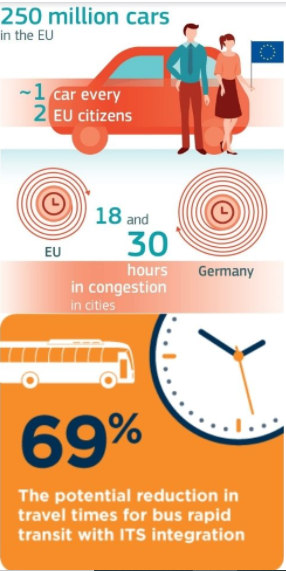
- Use a navigation system to find the best route based on real-time conditions
- Alert drivers of potentially hazardous situations in time to avoid crashes
- Be guided to an empty parking space by a smart sign
- Ride a bus that turns traffic lights green on approach
- Detect and respond promptly to traffic incidents
- Reroute traffic in response to road conditions or weather emergencies
- Give travelers real-time traffic and weather reports
- Allow drivers to manage their fuel consumption
- Adjust speed limits and signal timing based on real-world conditions
- Improve freight tracking, inspection, safety and efficiency
- Make public transportation more convenient and reliable
- Monitor the structural integrity of bridges and other infrastructure
You may have noticed that you are constantly in touch with many of these features. You just were unaware of it being the early implementation of smart transportation. One of the most advanced examples can be seen in Austria, where the Autobahn (A controlled-access highway system), and AsFiNAG (A corporation), brought the IoT to its roadside sensors. As a result, a highway designed to monitor itself was developed, it sends information to drivers and predicts traffic to ensure lanes stay clear of congestion. Bernd Dalter managing director of the corporation stated “We connected more than 70,000 sensors and 6,500 traffic cameras over fiber-optic networks, this gives us live feedback on our roads to help route emergency vehicles and provide drivers with up-to-date information.”
It may not be clear to some of you how an advanced example of smart transportation would work, so let me explain how a smart intersection should work in the future.
A car with sensors and bluetooth and LIDAR (Light Detection and Ranging) passes through the intersection and detects a pedestrian with risk of collision, the car stops avoiding a possible accident, the car then gets to a stop light, the stoplight sensors send the car a go signal or a stop signal depending on whether there are cars or not entering the intersection, avoiding wasted time and crashes (They could prioritize emergency vehicles allowing them to perform their job quicker).
As you may imagine this has astonishing benefits such as security, environmental considerations, supply chain resiliency (Which is the capacity of the supply chain to adapt to changes). But not everything is good, we have to look at the other side of the coin, and it is that smart transportation brings up extreme power consumption, and some employees or organizations may irresponsibly manage users’ data.
HOUSING
When people think about smart cities, they think about autonomous cars and hundreds of solar panels that charge the entire city, and they are not wrong, however there are many day-to-day aspects related to smart cities that people tend to everlook , and one of these is husing. According to the United Nations (UN), 9.700 million people will be habitating the world in 2050, which represents a huge increase from the actual number of 7.700 million people. And where do you think these millions of people will be living in the future? In 2050, also according to the UN, around two thirds of the world population will be living in cities. This one of the biggest challenges our humanity is facing right now, up to the degree of climate change crisis according to demographers from the United Nations. This hyper growth of population combined with the increase in the centripetal movement from the outskirts directed to cities has made the topic of housing inside smart cities a much relevant aspect than it was before.

But it’s not the lack of housing to hospedate all the new city entrants the only problem that concerns smart cities experts, but also the way that people could afford these houses in order to reduce the closest to zero possible the amount of homelesspeople in the streets. In Barcelona center, there are around 3.000 people with no place to live. This concern goes against the human rights and it is a problem that demographers in combination with economists are trying to solve.
So, it is clear that smart cities have big problems according to where, how and under which price will all the coming generations live in the cities, therefore, let’s see which are the possible solutions that experts are considering in order to solve these challenges.

Companies around the world have detected the increase in demand in the housing industry, therefore they are looking for ways to achieve a faster construction of housing for supplying the demand at the lowest cost possible. Among several potential solutions, there is one that is already being implemented and is having great results in the UK. This solution is called modular housing. It consists of buildings that are prefabricated off-site and distributed in modules that can be easily connected and disconnected. They are movable, expandable, reusable, fast and most importantly, affordable. This invention could be one of the biggest drivers to solve either the problem of accommodation of the new generation and also to allocate families with less resources under the aid of the governments.
In fact, Brian Rose, a famous podcaster and actual candidate for the 2021 London mayoral elections made a video about why modular housing could work in a city like London and how, through public funding, they could accommodate more than 2.000 families in these buildings in London alone in the upcoming years.

Also, according to the homelesness growth, the city of Dublin decided to invest in this innovative technology in order to shelter “homeless families living in hotels” as said by The Irish Times. This measure was implemented years ago, and due to its success, they decided to invest more than 20% of the city council’s capital budget for the next few years in order to build modular houses for these low-income families.
Having said this, booth companies and governments are aware of the existing problem around housing and homelessness, therefore, if they continue to put all their effort in solving these problems and remain investing in the right projects, we can see either the homelessness rate decrease and the number of people living in the cities increase with no lack of housing supply.
ENVIRONMENTAL IMPACT
Until now, the key aspects of these new and intelligent cities have been cited and very-well explained. However, it is time to provide you with some data about the repercussion all these advances have in the environment.

It is no surprise that cities are the most detrimental places for the environment, provided they are accountable for more than 75% of the carbon emissions and between 60 and 80% of all energy consumption worldwide. Consequently, this entails an inefficiency cost of more than $300 billion per year. All this happens because more than half of the world population (about 55%, to be more specific) lives in urban areas, amount expected to increase in the upcoming years.
Despite being the worst actors in the scenario, these places are the most vulnerable regarding the effects of climate change. It is where disasters hit the hardest, both on the areas themselves and on the people living there.
Luckily for us, with the implementation of smart cities and all the solutions they offer, this problem can be tackled, and the effects diminished up to a certain extent. So let us dive into some specific examples so that you have a better picture of the topic:
As it has been mentioned earlier, electric vehicles is one of the most outstanding solutions and has already started to be implemented. The most relevant aspect is that it has far less CO2 emissions, which stem from the electricity generation.
Until the moment, everything has been found to be mostly beneficial because contamination is decreased by 25% on average, resulting in less air pollution. This is desirable for the overall population since, according to the Spanish Ministry of the Environment, rural and Marine resources, “each year around 16.000 people die prematurely from air pollution in Spain.” This data is alarming, because deaths provoked by apparently “nothing”, just living in our towns and breathing, are eight times more than the total number of deaths deriving from car accidents.
Besides, another advantage of this type of vehicles is that they are much cheaper to maintain due to most of their parts being fixed, so they do not suffer the damage from the continuous friction movement that moving parts have; and also, they do not require either changes of oil or alternative engine maintenance.
One example is Santiago de Chile, where they have already created an electric public transport network. Apart from contributing to the environment, as a result of the cheaper maintenance of the vehicles, the price of the tickets can be decreased, action that encourages the use of this service.

Another initiative has taken place in Amsterdam, the bicycle-friendly city. Since this mean of moving around is so popular here, they have implemented a system through which by riding, kinetic energy is produced and used to charge batteries. This electricity is transferred to the grid once the bikes are parked and connected. This fabulous idea allows each bicycle to produce 1kWh per day, which in total amounts to a lot.
Related to this electricity thing, the “smart grid” innovation arises. It consists of a two-way dialogue between power stations and households. This way, power plants provide just the energy demanded by the buildings, tailored to their needs. This helps increasing efficiency by reducing electricity waste, measure that would cut the air pollution derived from the electricity sector by 30% and would contribute to decreasing the number of deaths. Besides, these do not only use electric energy, but all renewable energy sources, decarbonizing in this way energy supplies.
Talking about the other player, “smart buildings”, it is worth mentioning that these are the ones in charge of communicating their needs to the grids, so to achieve a 100% energy efficiency. This is a game-changing aspect because more than 35% of the carbon emissions are produced by buildings, so it is definitely a feature to focus on. Monitoring where each person is inside the building so that the air quality can be better on more crowded areas and knowing whether windows should be opened or closed are just a few examples.
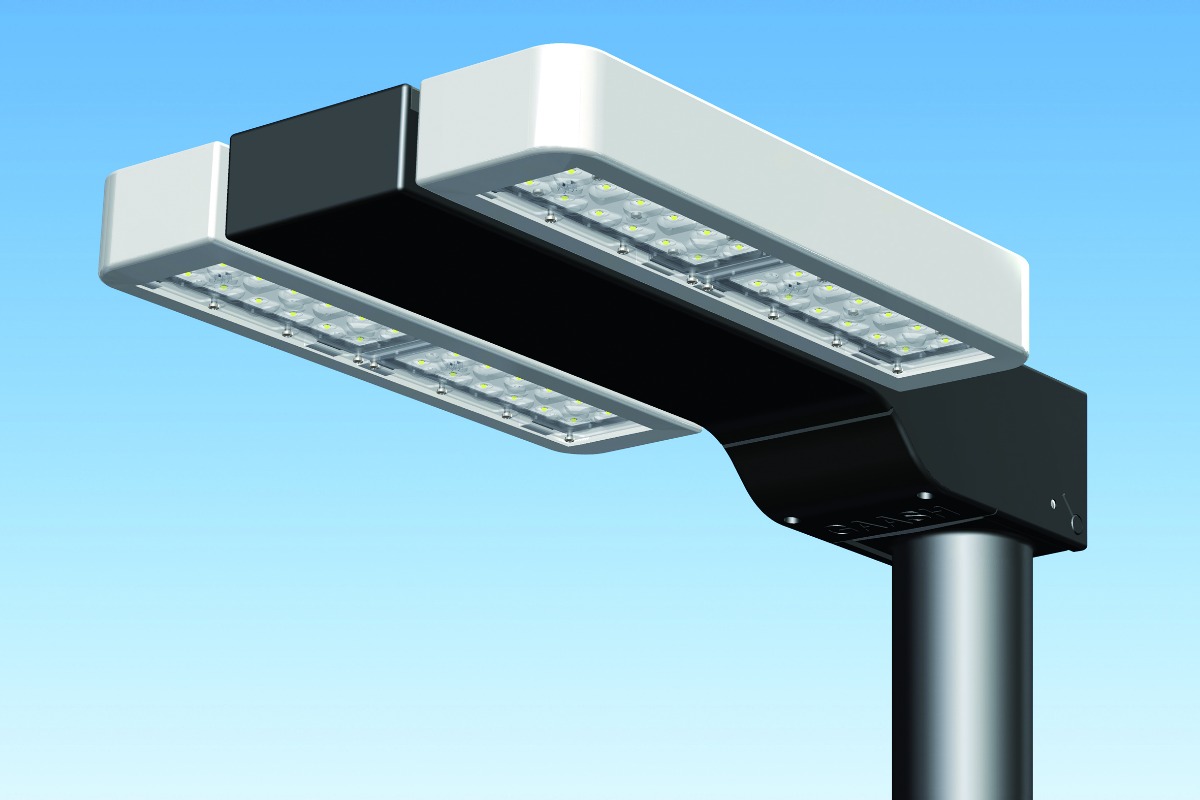
Another idea, put into practice in Barcelona are “smart street-lights”. These lamps do not only use LED technology, which is known for being much cheaper; but they are equipped with sensors so they can gather information about real-time movement in order to turn on and off automatically, control the river and air pollution… and then send this data so that it can be interpreted by experts and the correct measures can set in motion.
And finally, waste management. Provides constantly updated data on how full containers are, so that pick-up paths can be more efficient thus contributing to lower noise pollution, traffic congestion and bad odor. This would reduce emissions by around 60% and the cost of collecting by a 30%.
As has been seen, smart cities’ innovations and technology have a great positive impact on the environment, pollution reduction and consequently, people’s health and welfare. Then, even though the initial cost is high, it is by far surpassed by the value of all the positive externalities set off. So, for such return on investment… isn’t it worth it to take action?
Smart cities Transformation After the COVID-19 crisis
The truth is, that we all took for granted smart cities until the pandemic came into our lives. We all reached the conclusion that smart cities are not that “smart”.
One of the main characteristics of a smart city is that it is a resilient city that integrates physical and digital environments. In other words, a city that makes life easier and of more quality with the application of new technologies and systems.
What the outcome has shown is that there are some gaps in its resilience that have to be improved, so the next time an unfortunate life-changing situation like this comes to us, our lives do not have to change because our cities are prepared.
Nevertheless, due to the urgency of the matter, people and governments have developed another way of thinking that has triggered very innovative ideas. Ideas that are characterized by being focused on the welfare of the people. Cities suffer if their citizens are suffering. Without their welfare, they are simply empty structures. So, what has Covid-19 made us realize that has to change or improve in smart cities in order to achieve the welfare of its citizens?
Well, there is a handful:
Infrastructure
The physical landscape of a city is the base for all the systems working on it. So the more we focus on it the better is the rest going to work. According to a survey where 13,000 people participated in march 2020, 55% of them wanted investment in social infrastructures (hospitals and schools) whereas the 48% asked for investment in clean water projects. Who knows, maybe if covid hadn’t existed, petitions would have been very different.
On the other hand, initiatives like 10’ walk from home green spaces and turning some roads into pedestrian streets, bicycle lanes and public transport use only proved to increase life quality. If we want city centres to be attractive to families we need to adapt them into safe and accessible places.
Connectivity

During lockdown, worldwide broadband consumption has increased 60%. Not only because of homeschool and work-from-home, the main reasons were video streaming and TV content. Obviously people didn’t have other things to do. What about those who yet don’t have internet connection, there are 3.7 billion people in this situation, people that can’t work from home, entertain themselves, study remotely… There is great connectivity inequality and this has to change.
One good example of a solution is the final 5G roll out that could change connectivity in places like india and more western countries. The 5G spectrum is a critical component of the digital infrastructure required to enable a post-COVID-19 world of mainstream remote working, telehealth, digital supply chains and commerce, and virtual social connections.
Sensors and devices

They are the integration point between the physical and the digital world and the ones in charge of collecting real-life data at each moment. Having sensors around a city that measure capacity, CO2 emissions, body temperature, noise levels… It’s managing a city with accurate data. For this a high investment in IoT is required, and governments are starting to include it in their present-future plans.
Thanks to the IoT technologies initiatives like CovidSafe App that allowed the tracing of contacts and infectious, Australia could manage the pandemic outstandingly. Also an example of good tracing and the implementation of sensors is Israel, with its real-time situation reports. These examples demonstrate cities that smart is completely achievable with accurate and up-to-date information.
Data Ingestion and Orchestration
By the hand of devices and sensors, comes the data ingestion which is basically the integration of unstructured data that is perceived by sensors and structured data. Thanks to big data and AI technologies cities will be able to perform accurately in difficult situations (like the pandemic).
Some cities like Taiwan, that has stood out for its magnificent pandemic management, used a data driven response strategy in which its government has integrated its national health insurance database with its immigration and customs information to use data analytics to optimise tracing of potential cases.
Applications, Analytics and Interfaces
These are what allow the communication of data in accessible formats enabling communities to make well informed decisions and empowering them to engage in the co-creation of cities. Applications are what have kept people up-to-date and in communication with the rest of the world. It allows the building of communities for situation-improvement purposes (open-source) and can allow a problem to be solved in a certain location from any part of the world.
As a good practice of community and problem solving applications we take as an example is the Estonian online hackathon “hack the crisis”, which allowed people propose solutions for the crisis situation that Estonia was facing during the pandemic.
Security and Privacy
If a city masters all these characteristics, it is great, but for them not to melt down it is imperative to have solid and consistent Security in the designs and privacy of the data. Because if cities actually depend on their clever devices and systems, if there is a malignant intrusion, it could be catastrophic.
The pandemic has shown that indeed, we depend on many systems and applications that organize and make our lives easier, but sometimes, the fact that we expose ourselves to so many systems, make us be very concerned about our privacy. Without security nothing of this is actually useful because it means that we can’t trust it ending up not using it.
As a conclusion to the topic, I would like to say that even though the pandemic has been very hard for everyone, sometimes it is positive that things like this happen to make us realise that there is a need to change direction. In our case, smart cities have learned that to be “smart” its design has to be human-centred, because in the end, the ones who live there are humans.
Authors
“Javier Penelas Pintos. Economics, Sport and Technology are my passions. I consider myself a really committed person in everything that I propose to myself. I have some experience in the financial markets but more as a hobby. Physical activity is an important part of my life as well as the new and exciting technologies that appear every day.”
“Leah Gómez O’Hayon. I am a Management & Technology student. I see myself in the future as an entrepreneur of a digital business. I love gastronomy, playing tennis and dogs.”
¨Lucas Martinez Collar. I am right now studying a business management and technology degree, to get knowledge about the business world with a base on technology. I love to work with other people to make astonishing projects, and I like to work hard.´´
“Javier Sabín Ulloa”. I am currently studying management and technology at Universidad Carlos III de Madrid, and developing my training in my main fields: technology, its business applications, music technology and music production. I have a passion for entrepreneurship and innovation as well as personal growth.
“Claudia Aso Conrat. 2nd year “Management and Technology” student, passionate about both, learning and being able to apply the knowledge acquired to my daily life, and the mountains and the pure, real life. I see my life in 5 years running my own company which combines nature and technology, in order to merge the two worlds.”
¨David Gonzalez Gonzalez¨. Entrepreneur since 16, while studying and being an athlete, challenges are my thing.
BIBLIOGRAPHY
Albendea, L.G. (August 31, 2020). La COVID-19 replantea el diseño de las ciudades del futuro hacia unas más “smart”. Compromiso Empresarial. https://www.compromisoempresarial.com/innovacion_social/2020/08/la-covid-19-replantea-el-diseno-de-las-ciudades-del-futuro-hacia-unas-mas-smart/https://www.compromisoempresarial.co
Anonymous. (December 11th, 2019). Top 7 Smart City Innovations From 2019. Spring Wise. [Web
article]. Retrieved from https://www.springwise.com/innovation-snapshot/top-7-smart-city-innovations-2019
MSCI Inc. . (2020). “Post Pandemic Reflection: Smart Cities”. https://www.msci.com/documents/1296102/18941732/ThematicIndex-SmartCities-Post-COVID-cbr-en.pdf/5b4df1b8-64d1-240c-eae3-f40eb36afbbf
Kelly, O. (2016, 30 noviembre). ‘Stackable’ modular apartments to be built for homeless
families. The Irish Times. https://www.irishtimes.com/news/social-affairs/stackable-modular-apartments-to-be-built-for-homeless-families-1.2886474
KPMG. (October, 2020) “Smart City transformation in a post-covid world”. https://assets.kpmg/content/dam/kpmg/au/pdf/2020/smart-city-transformation-in-post-covid-world.pdf
Krupp, F. (July 20th, 2011). Health and the smart grid. Environmental Defense Fund. [Web
article]. Retrieved from https://www.edf.org/health-and-smart-grid
LinkedIn Learning. (2017, July 19). Smart Cities: Solving Urban Problems Using Technology.
Youtube. https://www.youtube.com/watch?v=nnyRZotnPS
Mazur, S. (2020, December 9). An Introduction to Smart Transportation: Benefits and Examples. DIGI.
https://www.digi.com/blog/post/introduction-to-smart-transportation-benefits
Peniaško, L. Waste Management Solution for City. Sensoneo. [Web article]. Retrieved from https://sensoneo.com/smart-waste-management-for-cities/
Smartcity. (2019, 19 noviembre). Smart City Is Where Affordable Homes Are! Smartcity Press.
https://www.smartcity.press/affordable-homes-in-smart-cities/
TED. (May 5th, 2016). Cities and Climate Change: Making the Links | Sara Hughes | TEDxUofT. [Video].
Youtube. https://www.youtube.com/watch?v=BFxKWBN71yE
Tomas, J. P. (2017, June 16). What is smart transportation? Enterprise iot insight. https://enterpriseiotinsights.com/20170626/transportation/20170625transportationwhat-smart-transportation-tag23-tag99
United Nations. (19–07). Creciendo a un ritmo menor, se espera que la población mundial alcanzará 9.700 millones en 2050 y un máximo de casi 11.000 millones alrededor de 2100. https://population.un.org/wpp/Publications/Files/WPP2019_PressRelease_ES.pdf
VINCI energies. (2015, August 24). What is a smart city ? Youtube. https://www.youtube.com/watch?v=Br5aJa6MkBc
Willige, A. (September 11th, 2020). The UN says climate-smart cities are the future – these 3 projects show their potential. World Economic Forum. [Web article]. Retrieved
from https://www.weforum.org/agenda/2020/09/climate-change-resilience-urban-infrastructure/
Wray, S. (2019, 22 enero). Smart cities get their houses in order. Smart Cities World. https://www.smartcitiesworld.net/special-reports/special-reports/smart-cities-get-their-houses-in-order-
